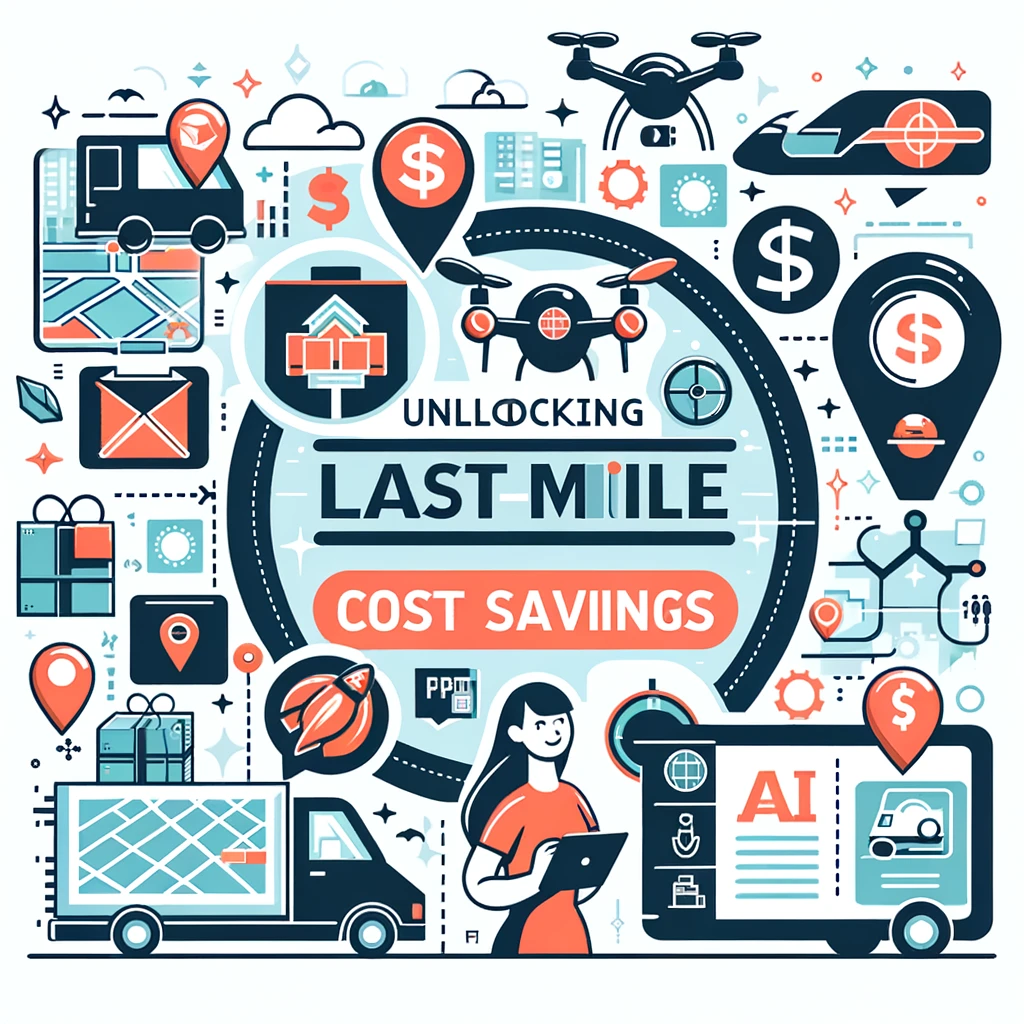Cost Savings in Last-Mile Logistics: The Challenge
Cost savings in last-mile logistics is very important. Last-mile logistics, the final step in the delivery process, is often the most complex and expensive. In this fast-paced industry, finding cost-saving strategies is key to maintaining competitiveness and profitability.
Strategies for Cost Reduction in Last-Mile Logistics
1. Route Optimization:
Creating the most efficient delivery routes is crucial. By using technology to analyze traffic patterns, road conditions, and delivery destinations, businesses can plot out routes that minimize travel distance and time. This not only reduces fuel consumption but also allows drivers to complete more deliveries in less time, boosting productivity.
2. Embracing Advanced Technologies:
Incorporating AI and machine learning into logistics operations can lead to significant improvements. New technology in logistics can predict traffic congestion, suggest optimal delivery times, and even automate certain decision-making processes. By using real-time data, companies can anticipate and address potential delays, thereby reducing costs related to time-sensitive deliveries. This makes efficient delivery an attainable goal.
3. Innovative Delivery Methods:
Adapting to new delivery methods like drones or electric vehicles can yield cost benefits over the long term. Drones, for instance, can bypass road traffic and deliver goods quickly, especially in urban areas. Electric vehicles, while requiring an initial investment, reduce fuel costs and maintenance expenses due to their fewer moving parts, not to mention their contribution to reducing carbon emissions. All in all, these are sustainable solutions.
4. Enhancing Customer Communication:
Proactively communicating with customers can significantly decrease the chances of delivery failures. Implementing systems that offer real-time tracking and flexible delivery scheduling empowers customers to choose convenient delivery times, thereby reducing the likelihood of missed deliveries. This also cuts down on costs associated with re-delivery efforts.
5. Load Optimization:
Efficiently packing and loading delivery vehicles ensures that each trip carries the maximum possible amount of cargo, thereby reducing the total number of trips needed. This practice is not just about filling a truck to capacity but also involves intelligent planning to ensure items are delivered in a logical order, further saving time and fuel.
Implementing these strategies can lead to considerable savings in last-mile logistics, which is often the most expensive part of the supply chain. By optimizing each aspect of the delivery process, companies can not only cut costs but also enhance overall customer satisfaction.
The Impact of Efficient Last-Mile Logistics
Reducing Environmental Footprint:
Cost savings in last-mile logistics often align with sustainability goals. Lowering fuel consumption reduces the carbon footprint of deliveries.
Enhancing Customer Satisfaction:
Efficient logistics lead to faster deliveries and improved service, boosting customer loyalty and repeat business.
Conclusion: Peagle’s Role in Cost-Saving Last-Mile Logistics
In the realm of last-mile logistics, Peagle is a game-changer. With Peagle’s innovative solutions, businesses can unlock significant cost savings while enhancing delivery efficiency. From route optimization to advanced technology integration, Peagle provides the tools needed to transform the last mile into a cost-effective and customer-friendly experience. Want to know more about Peagle? Contact us!
